No content results match your keyword.
Content
You have successfully logged out.
Not registered yet?
Systematic analysis
Where do a product's raw materials come from? What do we need to manufacture it? How is it disposed of? At B. Braun, we have started to analyze the life cycle of our products.
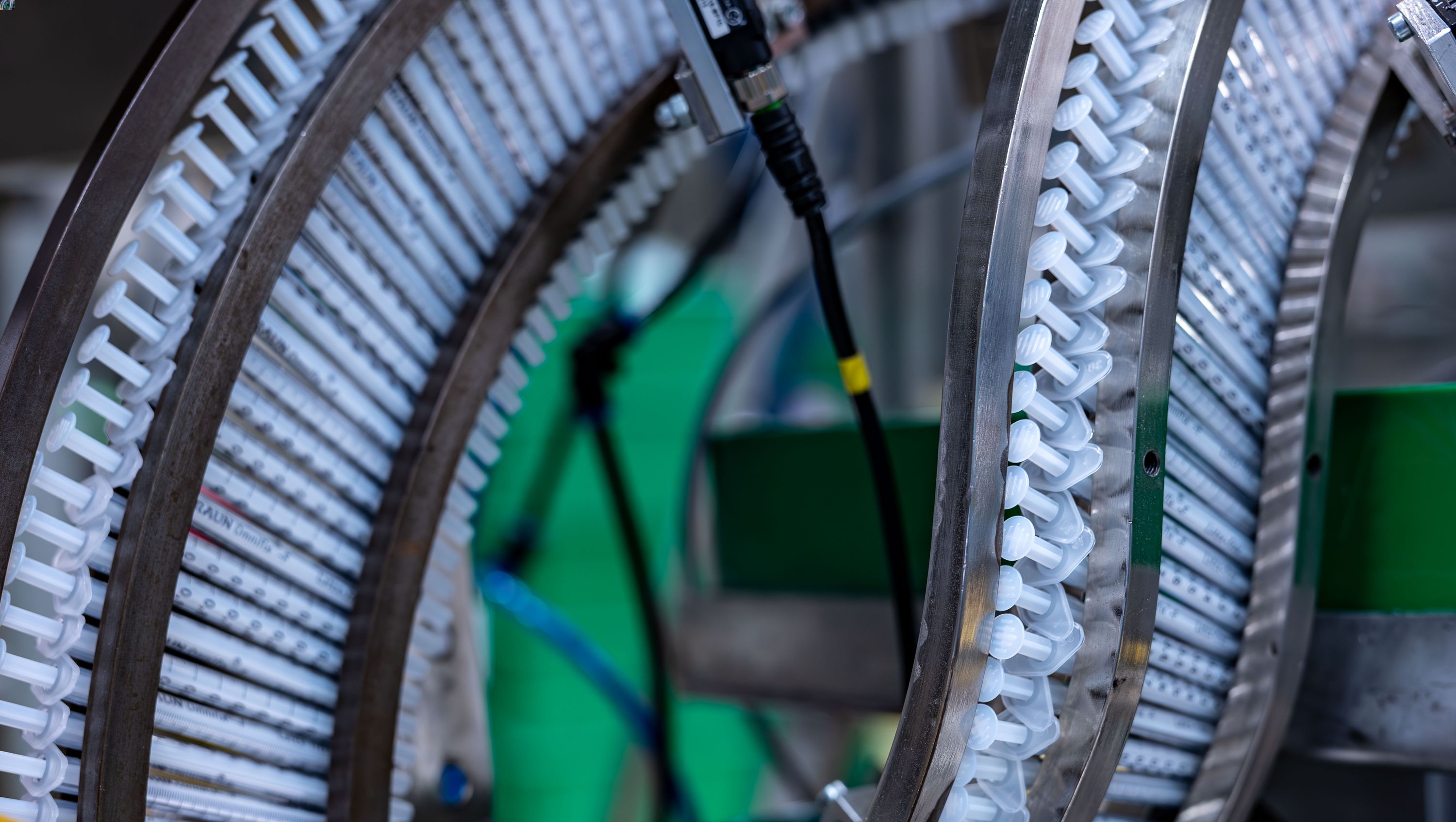
In the small, German town of Bad Arolsen, a product is manufactured that is used every day around the world: the Omnifix® F 1 ml single-use syringe. Yet, the Omnifix® F 1 ml is just one of around 700 syringe models produced in Bad Arolsen and shipped to 140 countries all over the world. Every year, 1.8 billion products leave the factory of ALMO, a B. Braun subsidiary specializing in the manufacture of single-use syringes. A single-use syringe weighs just a few grams. However, Bad Arolsen processes 9,000 metric tons of plastic granulate to make single-use syringes every year. [1]
Along with innovation and efficiency, sustainability is one of B. Braun's corporate values. As a family-owned company focused on future generations, we are committed to energy efficiency, climate protection, and resource conservation around the world. To develop sustainable products and services, we use new technologies and focus on uniform standards. Our goal for 2030 is to reduce the company’s Scope 1 and Scope 2 CO2eq emissions by 50 percent compared to 2021.
In order to identify where the potential for optimization exists, we first need to know exactly how much we are emitting. Not only that, but we must also find out where these emissions occur. This is exactly what a life cycle assessment (LCA) does—determine the total environmental impact of a product from supply of the raw materials to disposal.
Liesa Glaess is a program manager for B. Braun's sustainable hospital care portfolio. The material scientist explains the idea behind the LCA: “Our job is to get a comprehensive overview of a product's potential impact on the environment in order to systematically identify data-driven optimization potential. It’s not just about the emission of CO2 equivalents but every potential impact on the climate, soil, water, air and the health of humans and animals.” This entails collecting information on around ten data clusters, including greenhouse gases, ozone depletion, photochemical ozone formation, acidification, discharge of nutrients and human toxicity. The LCA records around 50 categories, each in their own unit of measure.
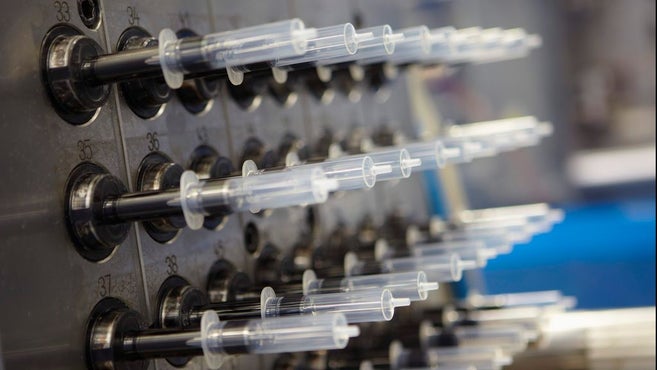
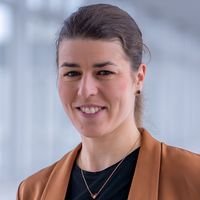
“Our aim is to gain a comprehensive overview of a product's potential impact on the environment.”
While this is all very clear from a purely theoretical standpoint, the tricky part is the practical details. Glaess explains: “We’re working on collecting data on the impact of our products. The structured and analyzed data provides information on where the best opportunities for optimization are, pointing the way toward the use of new technologies.”
The benefit of the LCA is that it collates different parameters, including material use, resource consumption/waste and recycling, into a holistic value, such as a CO2 equivalent.
Dr. Tobias Viere of the Institute for Industrial Ecology at Pforzheim University is a world-renowned expert on the LCA. He explains the special status of medical technology in this regard: “LCAs have been around for decades, but mostly in other industries considered especially problematic for the environment, such as the chemical or automotive industry.” Viere states that there were two main reasons this did not apply to the health care industry for such a long time: “For one, this industry is very heavily regulated. Various regulations governing sterility or the disposal of infectious waste, means the potential for change is very limited. The other thing is that health care products are not consumer goods. We're talking about people’s health and, in a trade-off, that always has the highest priority.” Nevertheless, Viere believes there is currently a shift in thinking underway in health care. “You realize that you can maintain high standards but still make the life cycle more sustainable.”
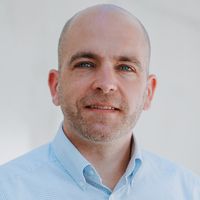
“Health care products are not just normal consumer goods. We are talking about people's health here, and this always has the highest priority when weighing things up.”
One of Bjoern Guenther's jobs is to collect data at B. Braun. He is a material science expert for predevelopment at B. Braun and he was responsible for generating LCAs as pilot studies of a number of products from the B. Braun portfolio—including two Omnifix® syringes. When he began collecting the data in 2019, he could not imagine the task ahead of him. “Our goal was to depict the entire life cycle—from the supply of raw materials to disposal—in every impact category. All in all, that was around 300 data points that we had to collect for every article,” explained Guenther. The work was easiest at the start of the life cycle, with the raw material suppliers. ALMO purchases almost 30 different formulas of plastic granulate from multiple manufacturers. Since the plastics industry already had some experience with LCAs due to market requirements, Guenther was able to collect high-quality data.
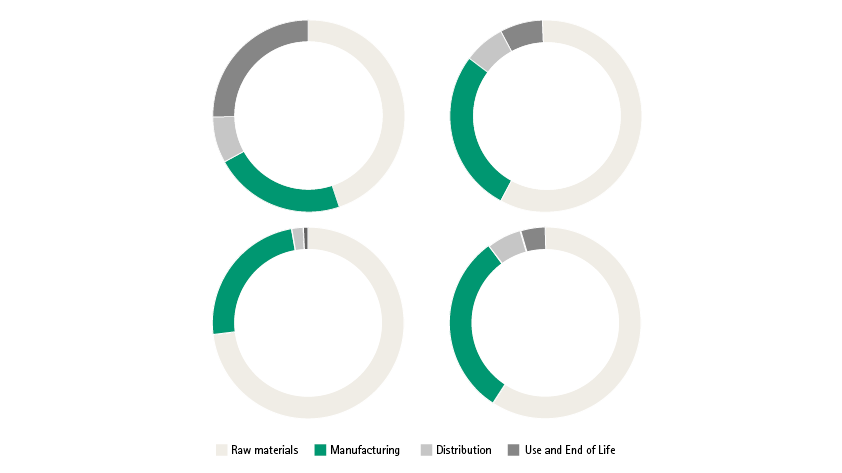
Some of the steps in the product cycle can favor the photochemical production of ozone.
/

“We had to collect around 300 data points for each article. And we had to do a lot of research for some of the data.”
Then, things became more complex. Heiko Meuser, the EHS manager at ALMO responsible for LCAs, explained: “We have 55 injection molding machines and 25 lines for printing, assembly and packaging in the production hall. We had to get the individual consumption rates from electricity meters connected to every machine.” Exactly which data to record had to be evaluated at all times. This is where the criteria in ISO 14044 comes in handy. “Each of these machines in the hall is unbelievably complex and actually you’re supposed to perform a separate LCA on every component. That’s misleading, of course, and ultimately also irrelevant given the enormous throughput.” These exceptions, however, needed to be defined and documented according to LCA guidelines.
In other areas, though, it became quite complicated, since only one percent of the total footprint can go unaccounted for. “We found out that the amount of ethyl alcohol used to clean the machines is not trivial,” recalled Guenther. “So, we took that into account and calculated it for each article.”
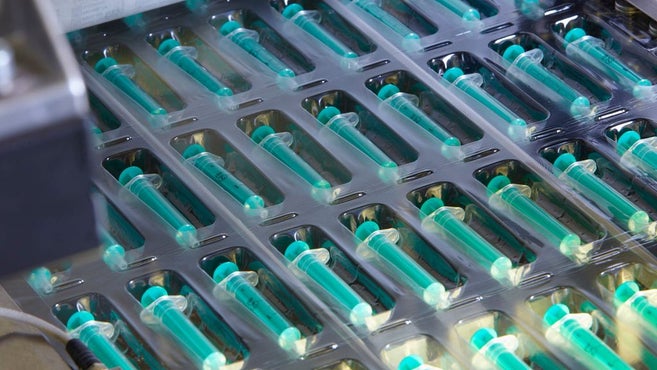
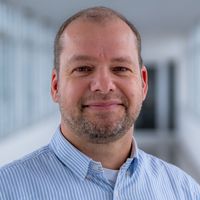
“We have 55 injection molding machines and 25 lines for printing, assembly and packaging in the factory building. We had to determine the individual electricity consumption with electricity meters, which we connected in front of each machine.”
It was even more complicated to research and compile the data for the syringes and their disposal. “We deliver to 140 countries,” explained Guenther. “And, of course, the syringes don’t just go to the big hospitals in the capital cities, they also go to small facilities out in the country, sometimes in mixed shipments.” You can only use averages and estimates in these cases. The same goes for disposal—one of the most crucial categories for an LCA.
“In Germany, the strict regulations require that all contaminated products need to be sent for thermal recycling after they're used,” explained Glaess. In other countries, such as in Africa or Asia, that does not always happen. There, medical waste can end up in a landfill, which leads to entirely different numbers in the impact categories.
When calculating these highly complex, individual impact categories, Guenther and Meuser can depend on one tool, which only recently became available to B. Braun: an LCA software product from the Dutch startup Ecochain. B. Braun and Ecochain began their collaboration in 2022 as part of the B. Braun Accelerator program, where the new enterprise presented their expertise. The software has won Guenther over: “Calculating the impacts in the separate categories myself would have been an impossible task. Instead, we enter our data points into the software, like the volume of granulate or the length and type of transport, and the effects are precisely calculated by impact category."
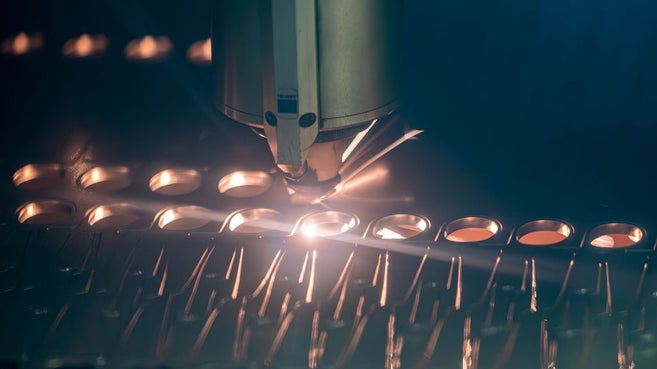
Marius Menyhart, an LCA project manager at Aesculap in Tuttlingen, Germany, is another employee who has experience with the Ecochain software. His job was to draw up an LCA for two surgical scissor products. Both of these products were manufactured at the B. Braun plant in Penang, Malaysia. The only difference? One is a single-use product, and the other one can be reused. Like Guenther and Meuser with the Omnifix® single-use syringes, Menyhart needed to dive deep into the production, use, and disposal of the scissors. “It went so far that we visited a disposal company in the Ruhr area of Germany to find out how exactly they deal with used scissors,” said Menyhart. Once his research was finished, the results ended up being entirely predictable. “As I expected, the reusable scissors ended up being more sustainable than the single-use product,” he explained. “After a few uses, it had about the same impact as the single-use scissors. But, since the useful life can be so long, the overall picture is much more sustainable.” However, he explained that this only describes one part of the use case: “Both scissors have different applications. The reusable model needs to be washed, disinfected and sterilized before use. This is why the single-use model is the only conceivable choice for a first-aid kit.”

“To find out exactly how used scissors are handled, we sometimes had to travel to a waste disposal company in the Ruhr area.”
These initial calculations have provided enough experience to roll out the LCA to most of B. Braun. “The objective of the pilot stage was to investigate how time-consuming it was to collect the data at first. It turns out that it's very time-consuming in some ways,” said Glaess. Still, this gets easier with every LCA. With thousands of articles for sale at B. Braun, though, the LCA needs to be seen as a long-term project. Glaess still believes that a significant insight into the life cycles of the products in the B. Braun portfolio and the resulting potential for optimization will come in the next few years. “We’re not doing all these LCAs just to get good at them,” she stressed. “We always have a clear goal in mind. What kinds of energy optimization improve production and what not? Does recyclable packaging really result in lower CO2eq emissions? Does using less material make enough of an improvement that we can ignore other requirements? What percentage comes from shipping? For all that, we need data, data and more data—systematically collected and analyzed in a structured manner."
Your feedback matters! Participate in our customer survey to help us enhance our website, products and services. Thank you for your support!